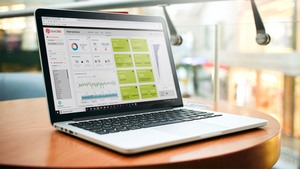Time to analyse and and control your fleet costs
Recent research suggests the number one concern for fleet managers is that of fleet costs. It is no surprise when you consider that fleet costs have risen by 9% on average across the EU (2017 – 2018). Some cost elements can’t be controlled, of course. For example, currency markets and the supply chain does impact purchase prices. Increases in fuel prices and legislation changes all add up to increase in fleet costs and the inability to budget accurately. However, other costs can be managed.
Total cost of ownership (TCO)
You probably know that when analysing fleet costs, you need to consider whole life costs and not just the headline figures. Also known as Total Cost of Ownership (TCO) it is a robust and known method for calculating the ‘real costs’ of fleet in the countries they operate.
These include direct and indirect costs of a vehicle such as lease costs, fuel, maintenance, repairs, depreciation and driver behaviour costs. Many costs are interlinked, so it’s essential not to look at them in isolation. You might find an easy way to cut one cost, but it could lead to greater expenses elsewhere.
Direct costs
Typical includes: depreciation, interest, vehicle repair and maintenance, tyres, fuel consumption, insurance, tax and fleet management fees.
Indirect costs
These are harder to quantify but also have an impact on fleet costs. These are typically fleet management admin/process cost and driver behaviour which can significantly increase fuel cost for example.
A holistic picture of all fleet costs is needed to make an evaluation of what the whole life cost actually is. It’s only at this point that you can carry out a fleet audit to truly understand the current fleet health and where rising fleet costs are occurring.
The move to Total Cost of Mobility (TCM)
So you now know what TCO is. Great, however, measurement is only based on a car and its usage. There are clear gaps in this method. TCO is quite generic. With TCM we gain a much broader approach. Focus is now on the mobility user and encompasses everything from a car and its related services, to travel management. Essentially how people move from one point to another. This movement typically includes transportation costs such as car sharing, trains, flights, taxis, hire cars and parking.
Time to implement TCM
TCM is by definition a personalised approach in a generic framework. You need to map your current situation:
- Knowing the TCM provides you with greater transparency of mobility expenditure
- This ultimately shows where the money is flowing and how business travel costs are changing over time.
- Users have the greatest influence on your company’s mobility costs.
- Every element of mobility has its own tax treatment.
ie. taxes should be take into account to compare the cost of the different mobility elements. - Taxes can be used to subsidise/incentivise the switch
As your fleet gains more efficient vehicles are your drivers becoming more efficient?
Are you ready to make a switch to TCM
- More and more of our customers are now looking at how their staff make business journeys. Companies who just focus on company cars and vans need to now consider how fleet mobility is the new default position.
- This can mean embracing solutions for car sharing, car clubs, bike schemes, public transport, taxis, car hire and planes and even hotels and car parking.
10 Steps to Fleet Mobility
- Truly understand your business objectives
- Understand staff requirements
- Consider office location v access to public transport
- Question the need to travel
- Decide how employees should book travel
- Determine travel policy restrictions
- Communicate the fleet policy
- Consider offering incentives and dis-incentives
- Don’t forget duty of care
- Get feedback and analyse data
Time to measure spend – TCM has to be transparent
- TCM can be complex due to multiple cost centres and suppliers
- You will have a clear picture of leasing costs but not necessarily mobility costs
- Does your current leasing provider have the tools you can utilise?
- Are they helping you to plan for the future?
- Have they factored in EV and how that will change TCM?
- What should your future fleet look like?
- Have you carried out cost comparison?
- Have you carried out any internal research?
As you can tell, rising fleet costs are part of a complex picture within fleets today. However, with the right strategy behind you, controlling fleet costs will have the added benefit of transforming your fleet policy to the benefit of your drivers and your company developing a robust strategy for the many new challenges ahead.
Suggested reading:
How to carry out a Fleet Tender Review




